The boom box is back: cassette tape revival is fuelled by Hong Kong collector and record label
- Boom box portable cassette players were introduced in 1966, and after digital music formats took over, the past 15 years have seen their revival
- A collector of boom boxes and a label issuing music on cassette tape in Hong Kong are optimistic about their revival and a return to physical music formats
Several items are synonymous with the golden age of hip hop in the 1980s: thick gold rope chains, fuzzy Kangol caps and enormous boom boxes. It was this train of thought that led Dreams Chow Yin-chi to buy his first boom box in 2015.
“I was looking for something physical that represented hip-hop culture and came across this old boom box in a stall in Sham Shui Po. I thought it was cool, so I bought it for HK$500 [US$64], but I wasn’t thinking about starting a collection,” he said. However, that one boom box quickly became two, then three, and today he has nearly 90.
The portable cassette player was introduced to the world by Dutch electronics giant Philips in 1966, allowing radio broadcasts to be recorded on cassette tape without any cables or microphones for the first time.
Its popularity grew in Japan in the early 1970s after a number of domestic companies released their own versions, and the trend had spread to the United States by the late 1970s, with music lovers attracted by the boom box’s portability and its loud volume, especially those in the budding hip-hop and b-boy communities. The boom box became be a fixture at block parties, while rap MCs used them to record their music onto cassettes to share.
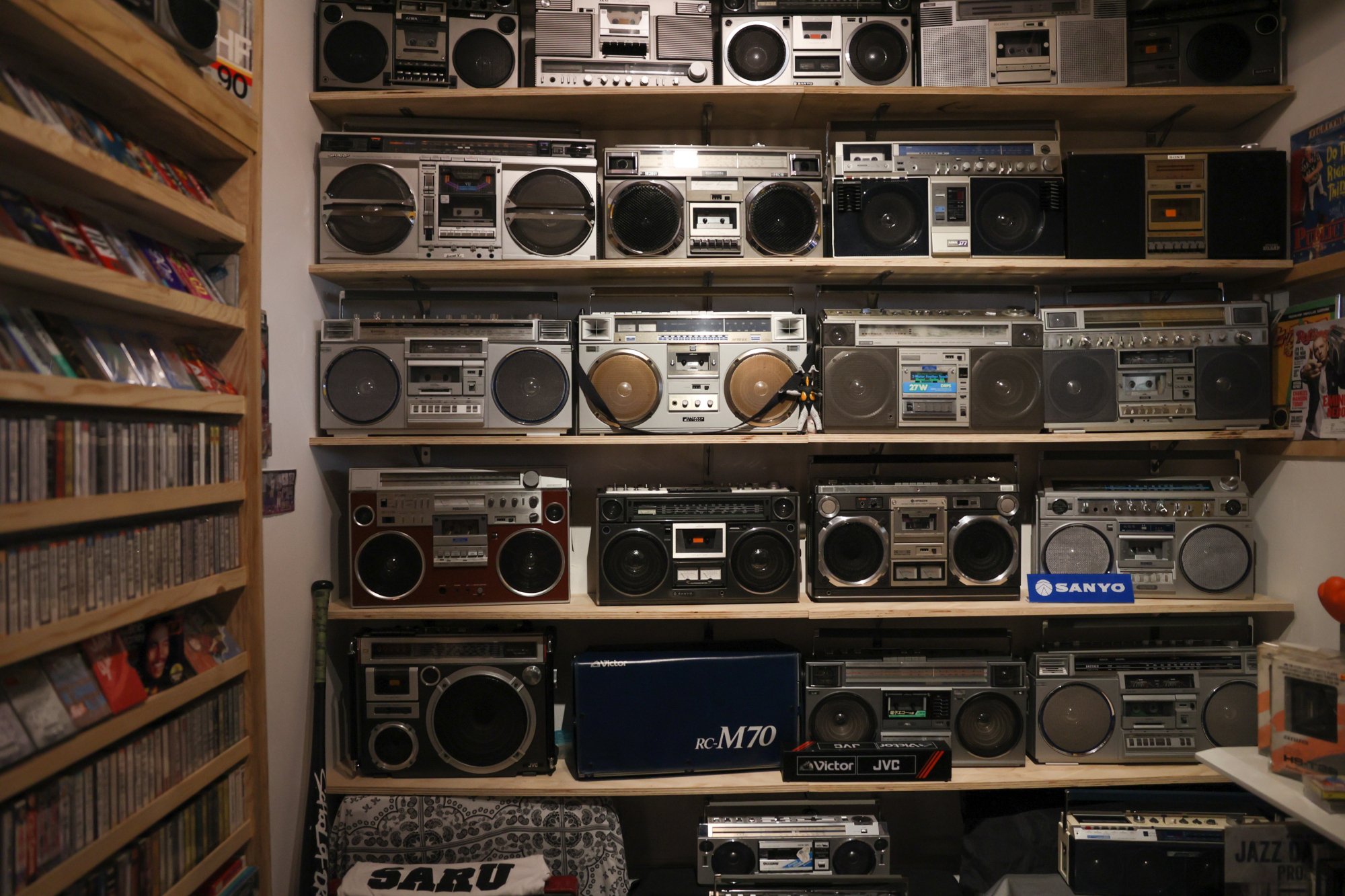
In the beginning, Chow mainly looked for boom boxes in good condition on second-hand stalls in the street markets of Sham Shui Po in Kowloon, Hong Kong. However, as his collection grew, he started snapping up boom boxes that played an important role in hip-hop history, such as the JVC RC-M90 -seen on the cover of the LL Cool J hip-hop classic Radio – as well as harder-to-find models. He mostly searched for these on websites such as eBay.
Now the bulk of his collection is stored in his workshop/mini-store in To Kwa Wan, Kowloon, filled with racks of cassette tapes, boom boxes and hip-hop and graffiti memorabilia that he occasionally opens to the public.
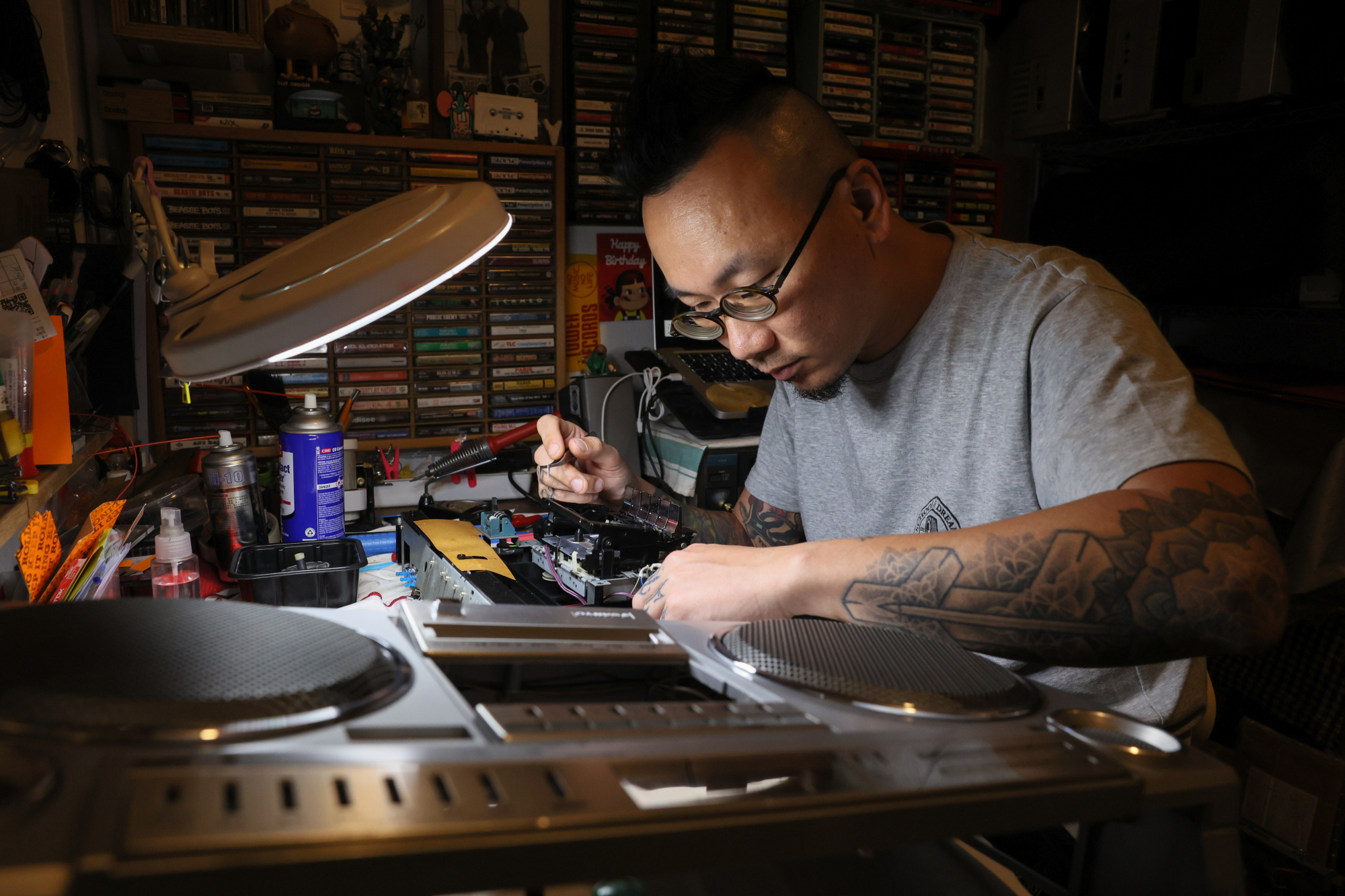
Besides collecting boom boxes, Chow also restores the cassette players – this can take two to three days or as long as a month. Whenever he buys a model, he gives it a thorough cleaning inside and out. While some come in working condition, others do not, and Chow does his best to get them running again.
“The purpose of the boom box is to play music. People might see some old boom boxes at a thrift shop or flea market and think it’s a piece of rubbish. However, if you give them some time, effort and care, they can become like new again,” Chow said.
Despite not having a technical background, he has taught himself how to carry out basic repairs to cassette players. For more complex problems, he looks for solutions on forums run by boom box collectors. Chow said boom boxes and cassette tapes began regaining popularity in the US around 15 years ago.

In Britain, cassette tape sales in 2020 doubled from the previous year, and totalled more than 156,000. The bestselling tapes were issued by Dua Lipa and Lady Gaga.
Davy Law Chun-fung, founder of Hong Kong record label Neoncity Records, said a large number of people who bought cassette tapes today were young people.
“Some of the younger listeners like tapes because they feel retro and vintage. They enjoy hearing the crackling or static sounds that cassette tapes sometimes have. This is very different from streaming or digital music, which sounds the same even after you listened to it 100 times.
“A cassette tape might sound different after you listen to it 10 times because of wear and tear of the magnetic particles on the film,” he said.
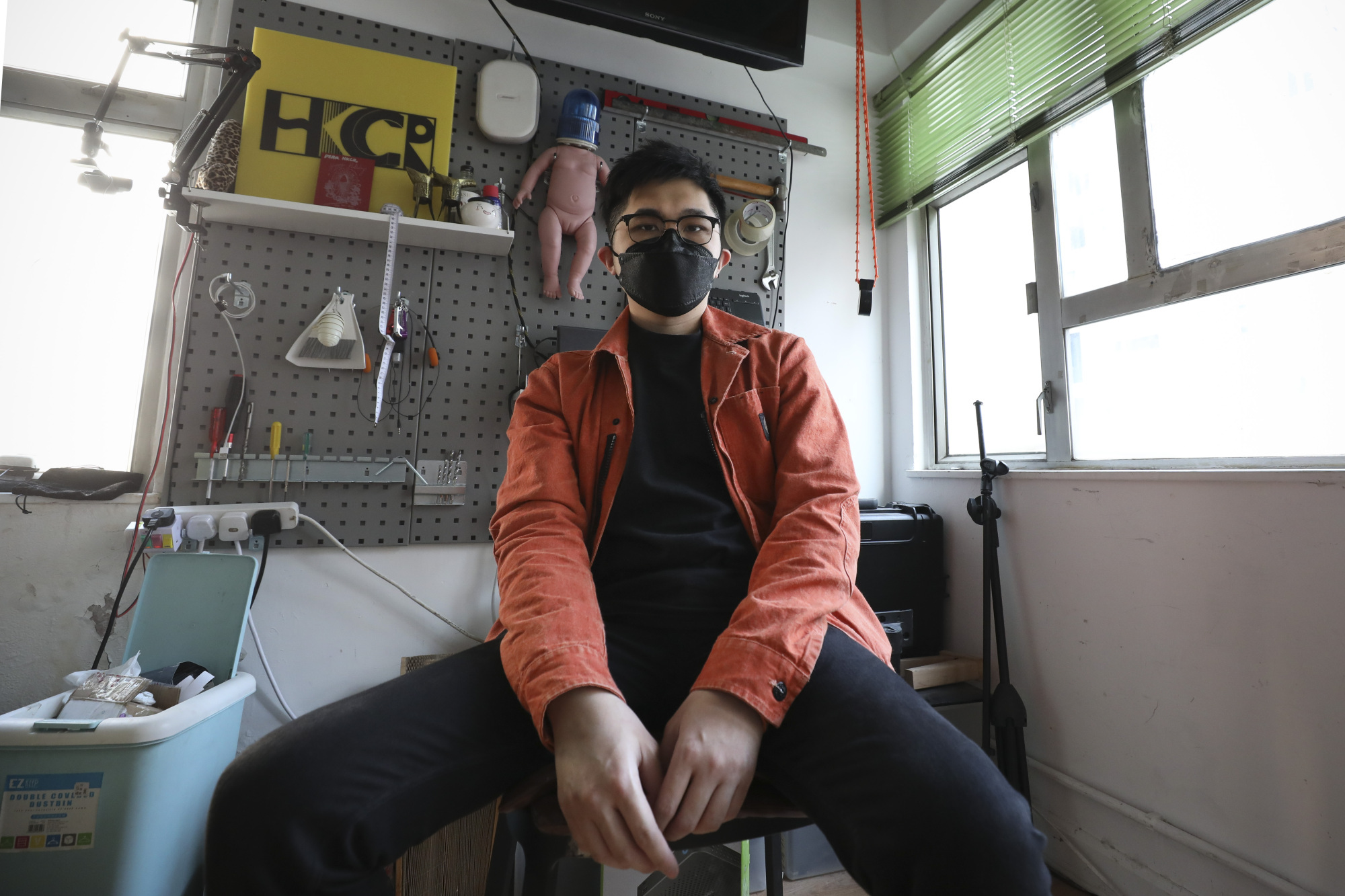
Cassette tapes are also favoured by young listeners because they are more affordable and easier to store than other analogue music formats such as vinyl records.
Neoncity Records released its first cassette tape in 2017 and has since produced more than 70 albums on tapes that are manufactured in Canada and the UK. Law believes that Neoncity is the only record label in the city that regularly releases cassette tapes. The label specialises in future funk, a subgenre of vaporwave, a genre that involves rearranging and modernising ’80s and ’90s sounds.
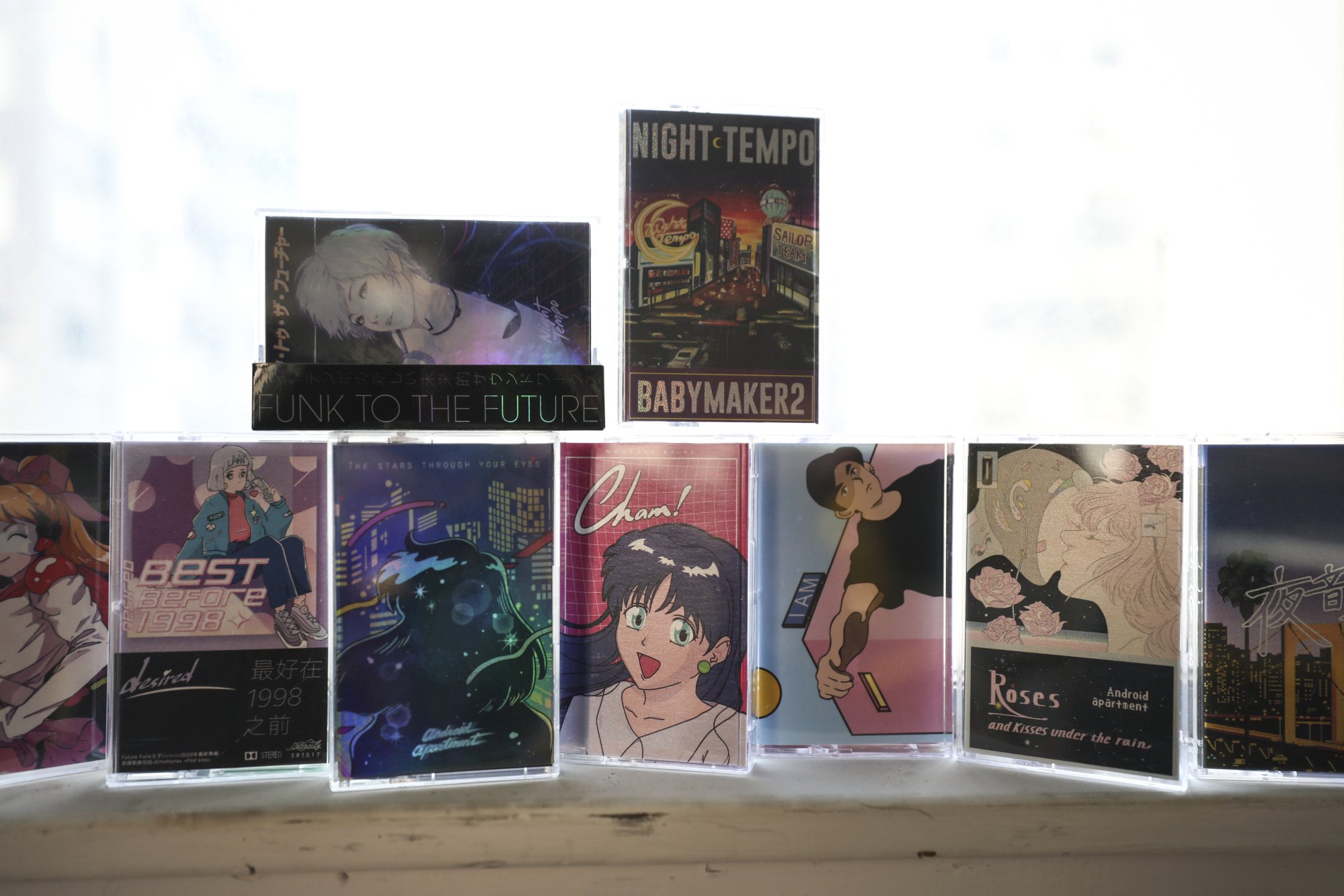
An avid tape collector himself, Law is optimistic about the future of the cassette revival at home and abroad. “It’s like a cycle where things make a comeback and become popular again every 10 years. And since the cassette tape revival is still going strong in the United States and has just started here, there’s still some time for it to continue growing in Hong Kong,” he said.
Still, the local cassette tape revival hasn’t led to an increase in boom box collectors in Hong Kong, which Chow says is understandable, as most people simply do not have the space for them. Regardless, he’s happy about the return to physical music formats, as he believes they appeal to more than just a listener’s ears.
With a physical copy of an album, listeners can flip the pages of the accompanying booklet. And in some instances, the booklets from Japanese versions of CDs have a different aroma than those made in Hong Kong or other places because of the paper on which they are printed comes from a different source.
“Music is so much more than just songs you can listen to on your smartphone or computer. Physical music can be enjoyed by four out of the five basic senses. Sure, digital music is convenient, but by having a physical copy, you get to enjoy it in so many more ways,” Chow said.
https://www.scmp.com/lifestyle/entertainment/article/3121413/boom-box-back-cassette-tape-revival-fuelled-hong-kong

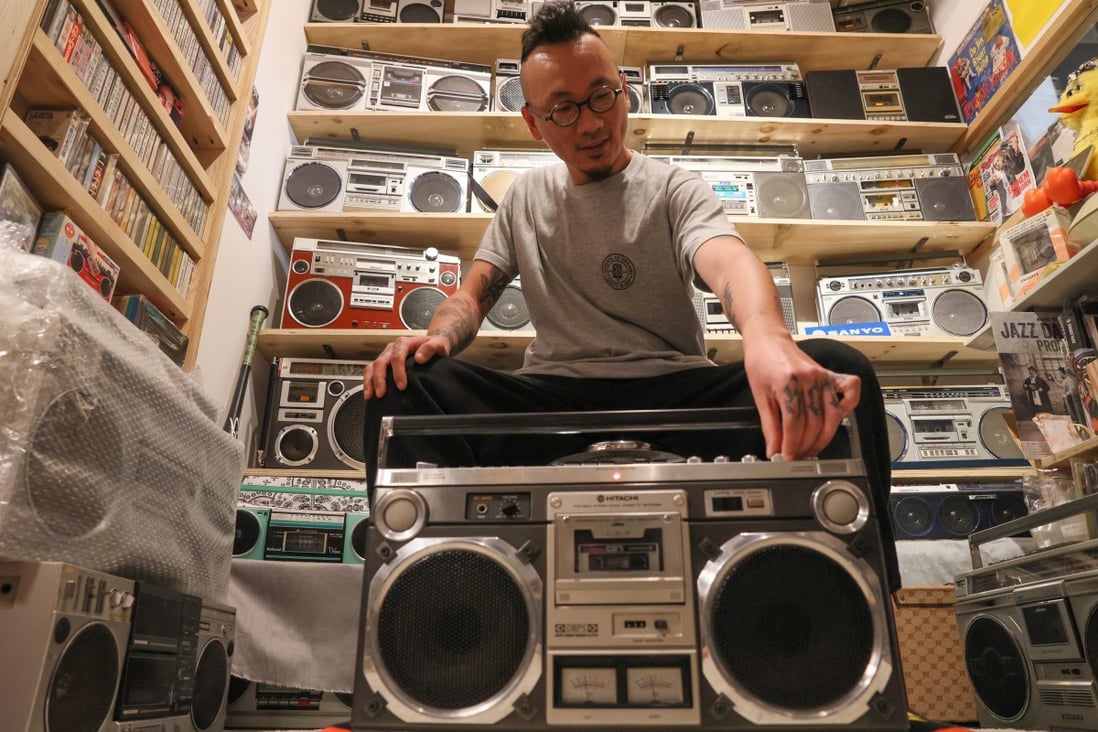
Comments